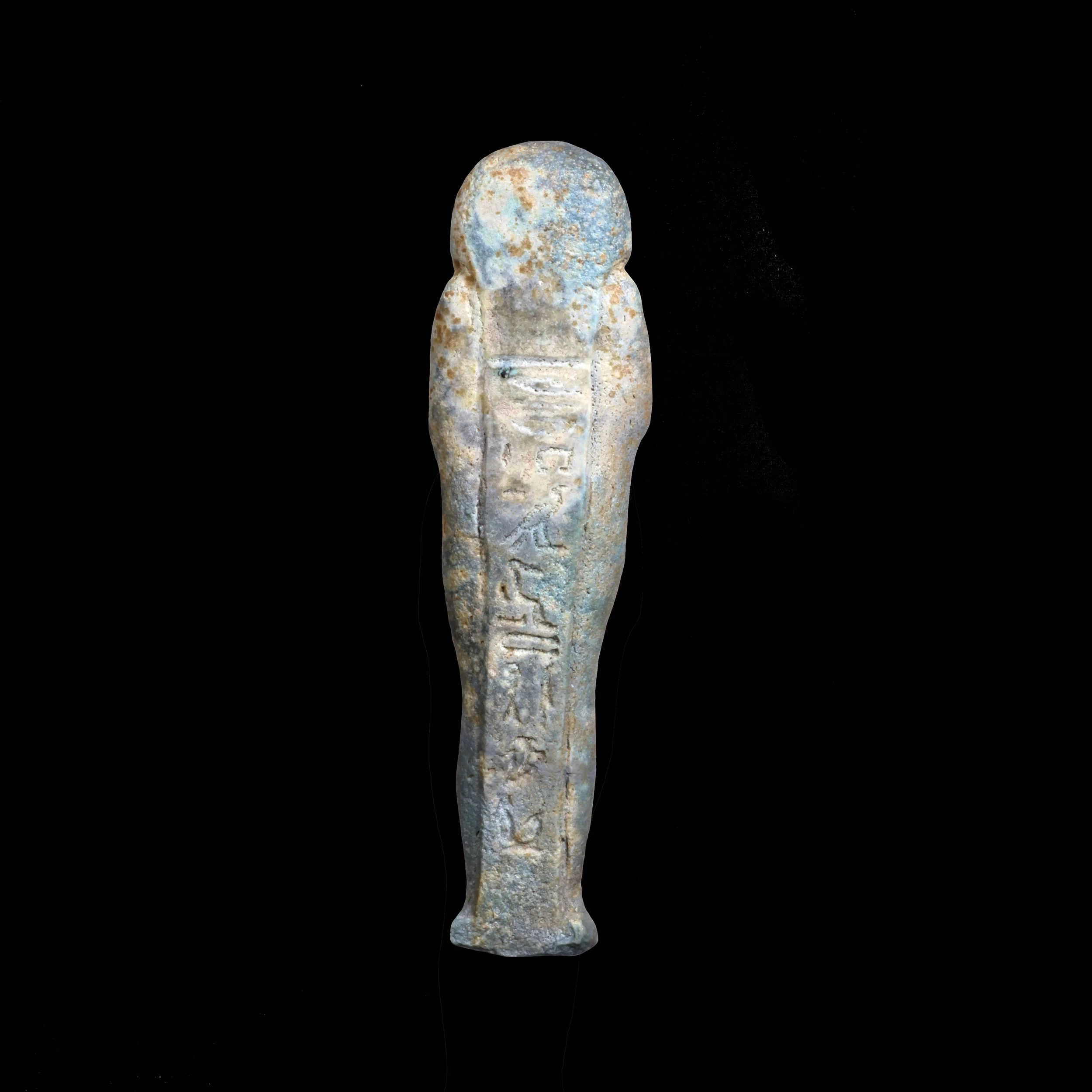Shabti for HorEmHeb
The mummiform statuette is executed in fine blue-glazed faience. It wears a plain tripartite wig and a pleated divine beard. The arms are crossed over the chest, with the left hand holding a pick and the right hand a hoe. A basket is depicted behind the right shoulder, its rope running over the shoulder and grasped in the left hand. The figure stands on a trapezoidal base and is supported by a dorsal pillar. The overall iconography and workmanship indicate an early Saite date (26th Dynasty).
Inscription:
The text is inscribed in two vertical columns, one on the front and one on the dorsal pillar. It includes the owner’s name, title, and parentage.
Front (1):
sHD Wsjr rnp ¡r-m-Hb sA n anx-p(A)-Xrd mAa-xrw
“The Illuminated one, the Osiris, the renep-priest Horemheb, son of Ankhp(a)khered, true of voice.”Back (2):
irj n nb.t pr.(t) ¦A-Srj.(t)-n-tA-IH mAa-xrw
“Born of the lady of the house Tasheritentaieh, true of voice.”
Commentary:
This shabti belongs to Horemheb, who held the title of renep-priest — a sacerdotal office particularly attested in the Western Delta. The title derives from the root rnpj, “to rejuvenate,” and may refer to rituals of renewal or rebirth. The term is associated with the “rejuvenation” cult of the goddess Hathor (or her aspect Sekhathor) and the mythological regeneration of the Apis bull. The inscription conforms to the conventional Saite-period formula, invoking Osiris and emphasizing the justified state (maa-kheru) of the deceased and his mother.
Material: faience
Size: 11,6 cm
Period: Early 26th Dynasty (c. 664–600 BC)
Provenance: Belgium private collection 1990’s
Price € 1750,—


